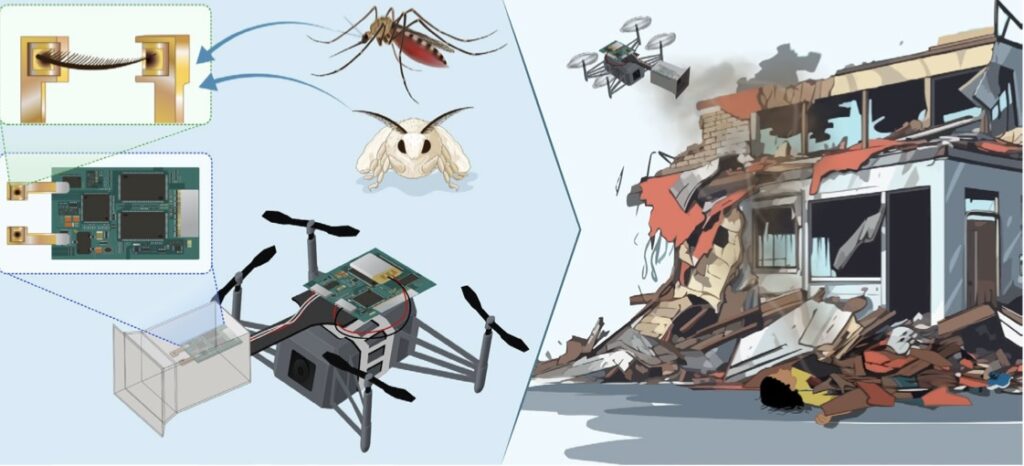
- ARAB NEWS
- 01 Aug 2025

TOKYO: A team of researchers in Japan have used silkworm moth antennae to develop a novel bio-hybrid drone capable of odor sensing and tracking, Shinshu University announced.
The researchers developed the odor-sensing bio-hybrid drone by integrating robotic technology with biological odor sensors from insects.
Conventional drones use visual sensors for navigation. However, environmental conditions like dampness, low light and dust can hinder their effectiveness, limiting their use in disaster-stricken areas. The university says the innovative product integrates the agility and precision of robots with biological sensory mechanisms, which will be able to enhance the applicability of drones in navigation, gas sensing and disaster response.
Incorporation of an electroantennography sensor to detect odorants and optimization of the electrode and enclosure structure in the robot enhanced the odor search range, detection precision and system performance of the drone. Insects, in particular male moths, can detect windborne sex pheromones from distances that, in some cases, extend to several kilometers through a process known as odor-source localization.
The team of researchers was led by Associate Professor TERUTSUKI Daigo from the Department of Mechanical Engineering and Robotic at Shinshu University, along with Associate Professor NAKATA Toshiyuki and FUKUI Chihiro from Chiba University.
Explaining their motivation behind the study, Dr. Terutsuki says, “Our team is continuing to develop bio-hybrid drones that utilize living insect antennae as odor sensor elements. In this research, we strive to incorporate the dynamic movements and mechanisms of living organisms to dramatically enhance the performance of our odor-tracking drones. We initiated this study with the belief that these advancements will enable more effective odor detection and broaden applications in rescue operations.”
The bio-hybrid drone could potentially revolutionize gas leak detection in critical infrastructures, early fire detection, enhance public security at airports and enable better disaster response by improving rescue operations.
The technology could be particularly useful for rescue purposes in places such as Japan that are more prone to natural disasters such as earthquakes. “Traditionally, search and rescue efforts have relied on manual visual searches due to the absence of a definitive technology capable of efficiently locating individuals in distress,” Terutsuki says. “The advanced bio-hybrid drone developed in this study has the potential to enable responders to rapidly locate survivors by tracking odors, ultimately saving more lives when every second counts.”